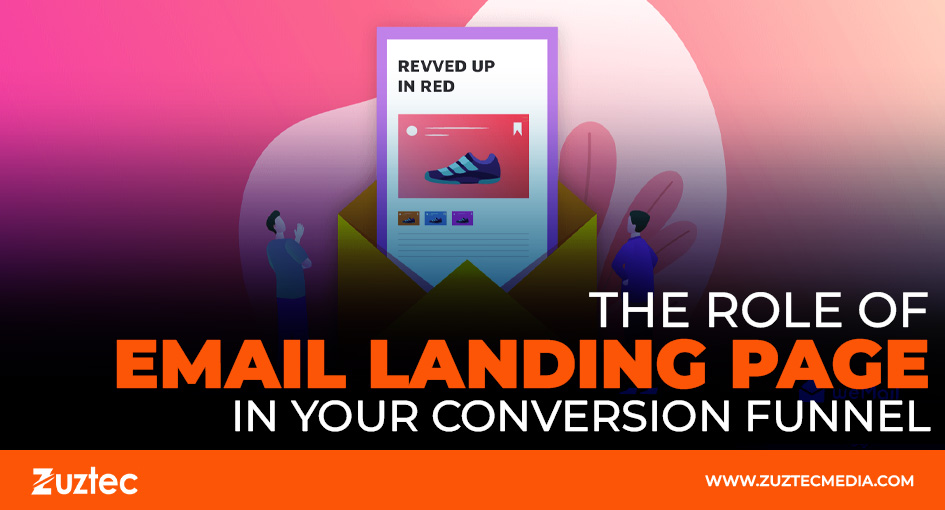
The Role of Email Landing Pages in Your Conversion Funnel
In the world of digital marketing, the journey from prospect to customer is not a linear path. It’s a carefully crafted journey known as the conversion funnel. This funnel, which begins with awareness and ends with a sale (or another desired goal), is the foundation of every successful marketing strategy. The funnel’s purpose is to guide potential customers through various stages, from learning about your brand to making a final decision. However, moving prospects through this funnel requires effective tactics and tools at each stage. One essential element in driving users down this path is the email landing page.
Email marketing is widely regarded as one of the most effective ways to engage customers, build relationships, and drive conversions. But its success does not solely depend on crafting compelling emails; the landing page where the recipient lands after clicking through plays an equally important role. It serves as a crucial touchpoint that shapes the customer’s experience and can ultimately determine whether they move forward or drop off. A well-designed landing page plays a pivotal role in guiding leads through the conversion funnel, helping them seamlessly transition from interest to action.
This article explores the vital role email landing pages play in the conversion funnel, how they enhance the overall customer journey, and why they are essential for achieving marketing success and maximizing conversions.
Email Landing Page: Understanding the Conversion Funnel
Before diving into the specifics of landing pages, it’s important to first understand the concept of the conversion funnel. A conversion funnel is the process through which potential customers move from being aware of your brand to making a purchase or completing another desired action (e.g., signing up, downloading a resource, etc.).
Typically, the conversion funnel consists of four stages:
- Awareness: The stage where prospects become aware of your business or product.
- Interest: Once aware, prospects develop an interest in your offering.
- Desire: The prospect now feels a genuine desire to engage with your business.
- Action: The prospect takes a specific action (purchase, sign-up, etc.).
Each stage of the funnel requires different strategies and tactics to guide the customer down the path to conversion. One of the most effective ways to move a lead from one stage to the next is by using a landing page.
How Email Landing Pages Fit into the Conversion Funnel
The role of an email landing page within the conversion funnel is to act as the bridge between your email campaign and the desired action you want your audience to take. Whether you are promoting a special offer, driving traffic to your blog, or encouraging sign-ups, the landing page is the focal point where a lead’s interaction with your email campaign turns into a tangible outcome.
When a prospect clicks through an email, they expect the landing page to align with the offer, content, and messaging they saw in the email. This consistency is key to maintaining interest and preventing friction in the conversion process. If a user clicks on a CTA (call-to-action) in your email and lands on a page that feels disconnected or unrelated to what was promised, they may quickly lose interest and abandon the page.
The Role of Email Landing Pages at Each Stage of the Funnel
- Awareness Stage:
At this stage, the goal of your landing page is to capture the attention of leads and make them aware of your product or service. The content should be clear, concise, and compelling, offering enough value to encourage users to keep reading or take the next step. For example, offering a free resource or informational content in exchange for an email subscription can be an effective tactic. The page should also highlight your brand and its unique selling proposition.
- Interest Stage:
Once a prospect is aware of your offering, they move into the interest stage, where they begin to consider how your product or service might address their needs. Here, your landing page must provide more specific details about the product or service. Using testimonials, product features, or case studies can be an effective way to build credibility and keep the user engaged. At this stage, a lead may still be exploring different options, so you want to focus on highlighting what makes your brand stand out.
- Desire Stage:
In the desired stage, the user is already interested, and now they need a reason to act. This is where a landing page really has the potential to drive conversions. Offering exclusive discounts, time-limited offers, or bonuses can spark a sense of urgency and motivate the user to take immediate action. You can also use a strong, action-oriented CTA such as “Get Started Now” or “Claim Your Offer Today” to prompt action. At this stage, your landing page must have clear instructions, such as a form or button, that makes it easy for the user to convert.
To sum up, in the competitive world of digital marketing, a seamless and effective conversion funnel is crucial for success. Email landing pages play a pivotal role in this process by serving as the final destination in your email campaigns where visitors are guided to take action. By providing clear, compelling content, aligning with the messaging in your email, and optimizing the user experience, a landing page can drive significant improvements in conversion rates and contribute to the overall growth of your business. Whether you’re looking to boost sales, increase sign-ups, or generate leads, investing in a well-designed landing page is key to enhancing your conversion funnel and maximizing your marketing efforts.

